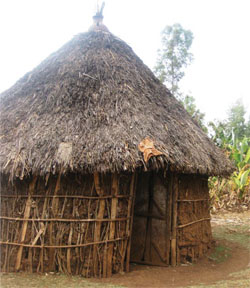What is the purpose of the community profile?
The purpose of developing your community profile is to collect baseline data for understanding health and health-related problems in your community. Baseline data means the data that is collected at the start of any programme or intervention that can later be used for comparison to assess what has changed. The baseline data will help you in the planning, implementation and evaluation of your health programmes. It may also help you in identifying problems that could be further investigated and addressed through small-scale research projects.
In your profile, the community may be summarised by population numbers and distribution, income, age, or education level. If the surveys are repeated at intervals it can tell you whether the population is increasing or declining in numbers.
Can you suggest some reasons why the population of a community might be rising, and some reasons why it might be falling?
The population might be rising because more babies are being born than in the past (i.e. the birth rate is increasing), and more babies and young children are surviving (i.e. the under-five child mortality rate is falling); it might also be rising due to migration of people into the community. The population might be falling for the opposite reasons: if fewer babies are born (e.g. due to greater use of family planning), or more of the babies and young children are dying, or people are leaving the community to live elsewhere.
The data in the community profile should give you an accurate picture of what is happening within the community at that point in time. The profile is expected to show the economic condition of the community. Health and educational resources may also be documented to reflect the availability of these services to the community population. For example, if there is a limited preventive or curative service, how are the people going to get healthcare? The profile may also shed light on a wide range of issues such as:
- Are there any free or low-cost health facilities for drought-prone areas?
- Are there graduates of model households who can teach other families how to promote their health and prevent common diseases?
- Are there voluntary community health service providers who can be used more effectively?
- What percentage of the children has been fully immunized at one year old?
- The community profile may also highlight the status of the housing and the physical environment surrounding it.
- It may contain information on the status of public safety in the community (local crime, alcohol abuse, substance use, mental health problems, etc.).
In summary, the community community profile should show the direction in which the community is going and the important issues that are currently affecting the health of the population.
